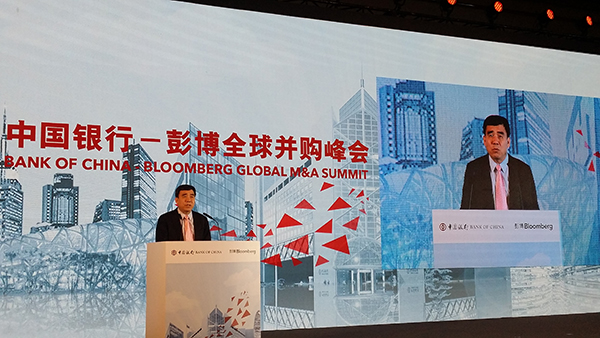China's finance industry embraces change
 |
|
Bank of China chairman Tian Guoli speaks at the Bank of China - Bloomberg Global M&A Summit on Tuesday. [Photo by Jiang Xueqing / China Daily] |
Mergers and acquisitions have accelerated the transformation of China's financial industry, according to leaders in the field.
Vice chairman and president of China Investment Corporation, Tu Guangshao told the Bank of China – Bloomberg Global M&A Summit on Tuesday that the sector was changing.
"The expansion from trade finance to acquisition finance will provide a strategic opportunity for development of the Chinese financial sector," Tu said.
"Acquisition finance requires financial institutions to adjust the content of services they provide, improve their product systems, increase the effectiveness of their organizational structures and put risk management well in place," he continued.
Zhu Min, former deputy managing director of the International Monetary Fund, said M&A is a crucial engine for post-crisis economic growth.
He said it will lead the global economy out of the gloom through supply-side restructuring.
In the first half of 2016, the volume of cross-border mergers and acquisitions led by Chinese buyers reached $149.2 billion, exceeding the total volume in 2015. The amount accounted for 23 percent of the total volume of global cross-border M&A, up from 6 percent in the same period last year, according to Tian Guoli, chairman of Bank of China.
"As the cross-border M&A by Chinese companies has entered a new stage, it is pushing forward the transformation and upgrading of China's financial sector," he said.
Bank of China has established an investment and loan linkage mechanism via diversified platforms and has 600 branches in 47 countries and regions.
"During the process of promoting industrial upgrade through cross-border M&A, Chinese companies should also pay close attention to potential risks to avoid shortsighted, irrational acquisitions that are seeking instant benefits," Tian said.
Certain M&A projects were overpriced and had problems with post-acquisition integration of businesses, he added.
















